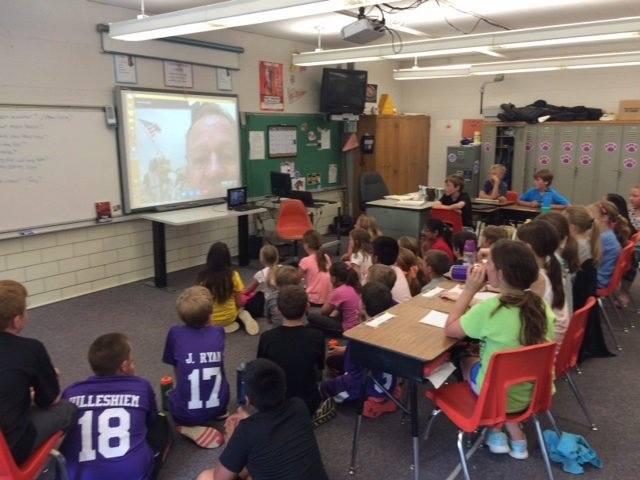96 percent of Minnesota school districts had access to high-speed Internet in their classrooms. Here’s what’s left to do.
6/4/2018 1:00:00 PM
Ninety-six percent of Minnesota school districts had access to high-speed Internet in their classrooms in 2017. This year, thanks to federal and state funding and local partnerships, we may see every school district in Minnesota on a scalable fiber connection to support K-12 education.
The Minnesota Legislature established goals to help Minnesotans improve the availability and use of broadband services in 2010. Shortly after, the Office of Broadband Development was created to “connect communities, policy-makers, providers, regional support organizations, and state and federal programs with each other and the resources they need to improve broadband access and use in Minnesota.” Two years ago, the Office of the Governor, Minnesota Department of Education (MDE), Department of Employment and Economic Development (DEED), and the national non-profit EducationSuperHighway partnered to advance broadband upgrades for schools statewide. Through the Minnesota K-12 Connect Forward Initiative, school districts and charter schools receive free tools and resources to get scalable infrastructure, sufficient bandwidth, and robust Wi-Fi connectivity to their classrooms.

Schools in the Southwest West Central Service Cooperative (SWWC) are the latest to benefit from E-rate funding and the Border-to-Border Broadband Development Grant Program as they switch from fixed microwave wireless Internet to fiber-optic connections. With their microwave connection, school districts were receiving an average bandwidth of 100 Mbps for $18.40/Mbps. Now, they will be receiving more bandwidth for a dramatically lower price, with average bandwidth and cost at 1 Gbps for $1.40/Mbps. About 70 percent of the network cost will be paid for by the federal E-Rate program, and the Telecom Equity Aid (TEA) will cover almost half of the remaining cost. As a result, more than 30 school districts in southwest Minnesota will be connected by the end of this summer to affordable, accessible broadband.
"This [fiber project] will triple the amount of bandwidth available for educational purposes in the school in the first year alone," said Amy Ernst, District 518 technology director in a recent news article. "Currently, the district makes certain decisions on how we do business based on the available bandwidth, knowing we often are at maximum capacity with the current wireless access to the internet. The move to fiber will open up educational and administrative opportunities that were previously not available on the slower network."
Fiber upgrades across the state have enabled thousands of students to take advantage of digital learning opportunities at school. In Goodhue Public Schools, for example, their high-speed (1 Gbps) fiber circuit has allowed the district to roll out a 1:1 Chromebook program, increase parent engagement, pilot personalized learning tools, provide ITV courses, and hold Goodhue Online Learning Days (GOLD) during snow days. “I want the best for our kids. I don’t want their education and futures determined by their zip code,” remarked Goodhue Superintendent Mike Redmond. “We’re able to access the world. We graduate about 50 kids per year, and by last count we had 153 high school courses offered per year. If a kid has an interest in what’s not available on site or locally, we still want to provide that learning experience for that student. Technology helps us do that.”
Over the last four years, the state has also made funding available to assist in the cost of broadband deployment to homes, businesses and community anchor institutions. Through the Border-to-Border Broadband Infrastructure grant program, broadband service has been extended to almost 34,000 homes, 5,200 businesses and 300 anchor institutions. Grants totaling $85 million, paired with private investment of over $110 million, have made this expansion possible. School districts have supported grant applications for their communities by describing how the broadband service was needed by their students to complete homework assignments.
As Hills-Beaver Creek School Superintendent Todd Holthaus noted upon the completion of the Rock County broadband project which brought broadband service to the community of Beaver Creek, “We were living a world of haves and have nots. We had families that didn’t have internet access. Even if they wanted to, they couldn’t get the access.” Once the project was complete, the district was able to roll out its 1:1 initiative to all 370 students in grades 3 through 12.
This fall, the Minnesota K-12 Connect Forward Initiative will continue to support K-12 school districts and charter schools with getting robust connectivity for their classrooms. For students to have full access to digital learning, schools must have robust Wi-Fi in every classroom. As of the 2018 E-rate cycle, $38.9 million in E-rate Category 2 funding was available to support upgrades in Minnesota. School districts can visit Compare & Connect K-12 to view their remaining Category 2 budget and access on-demand webinars or EducationSuperHighway’s tools and resources for support planning internal network upgrades.

Photos: Courtesy of Dr. Mike Redmond, Goodhue Public Schools superintendent
Economic Development
education